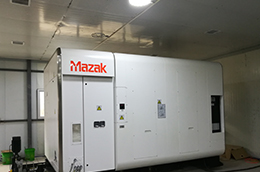Titanium grinding
[ Info Diffusion:This station | Time:2018-03-07 00:00:00 | hits:1 ] |
|
Titanium and titanium alloys are more difficult to grind than steel. When titanium is ground, titanium swarf particles tend to adhere to the sharp edges of the grindstone abrasive grains, making the grindstone dull and losing its grinding ability. At the same time, the high temperature produced by grinding causes titanium and abrasive grains to react chemically to form TiO and TiC, and dissolves in titanium to destroy the original performance of the titanium workpiece. In the grinding, the grinding wheel is easy to wear, so the speed of the grinding wheel must be reduced. Generally speaking, it should be 30%~50% lower than the same hardness steel, and 600m/min is better. In order to reduce the high temperature generated by grinding, coolant should be used. The coolant is generally selected from the group consisting of vulcanized oil, chlorinated oil, and nitroammonium. The material of the grinding wheel is generally white alumina, or green silicon carbide abrasive, with a grain size of 60-80 mesh, preferably with a medium hardness. Domestic use of single crystal corundum abrasives. The titanium parts ground with the white alumina grinding wheel have higher smoothness than the titanium parts ground with the green silicon carbide grinding wheel, but the grinding rate is higher than that of the former with the grinding.
Titanium is not magnetic, so when grinding titanium parts on a surface grinding machine, it must be clamped firmly to prevent the workpiece from loosening and causing chatter. Grinding on cylindrical grinding machines, be sure to use live top! d=====( ̄▽?zhuān)?)b needle grinder, if there is no live thimble grinder, it is better to use carbon steel as the thimble hole on both sides of the titanium part. It is responsible for the bad phenomenon and will affect the processing quality. |

